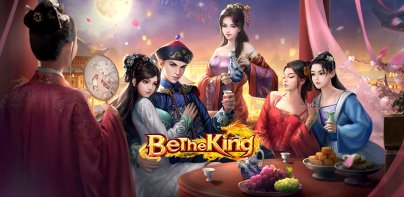



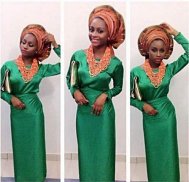

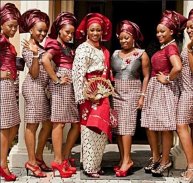
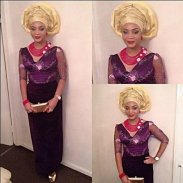
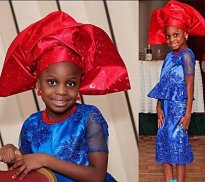

Asoebi Fashion Styles 2020

Description of Asoebi Fashion Styles 2020
Nigerian wedding asoebi styles in ethnic language is known as igbankwu and it is a beautiful ceremony of traditional customs and pageantry. The traditional wedding follows certain provisions like mode of behavior, customs, local cuisine, and the use of native outfits.
During Asoebi styles amazing high fashion and traditional outfits are worn which are fully representative of both families and friends. The guests, family members, the bride, and groom display different fabrics and designs.
The festive celebration full of joy, happiness, and fun is incomplete without the display of highasoebi fashion styles on such occasions.
The Nigerian wedding asoebi designers and tailors highlight creative spin on the customary blouse, wrapper, skirts, dresses, and even head ties. The styles are ingenious, brightly colored, and full of endless variations that bestow nobility to the men folk and flatter the female form.
The top asoebi and Ankara design could be sown as a short sleeve blouse, sleeveless blouse or long sleeve blouse. If the color choice is gold and blue, the blouse usually is gold and the skirt or wrapper blue.
The blouse comes in various designs with embroideries that add a more dramatic flair to the Asoebibella. The embroidery can be only on the short sleeves, neck region, or the entire blouse depending on the brides taste and preference.
Asoebi fashion styles can be, low or high bust line or moderately cut and should add to the woman’s beauty. A decorative piece as a brooch, flower, or rose increases the beauty of the Asoebi Africa. If a decorative piece is not part of the blouse then a beautiful hand fan adds to the effect dramatically.
The brides outfit complements the grooms because they are sown from the same material; they complement each other and signify the union of two people who become one. The fabric favored for such occasions could be a Ghana wax fabric, Ankara fashion style, Abada, hollandaise which is sown into a top blouse and a large wrapper referred to as Akwete.
The body is adorned with beautiful sandals, ear rings, necklace, wrist lets, waist beads (jigida), bangles, feet and wrist chains, gold, coral beads and body covered in white clay. She may wear brass leg rings and the toes are not left out and are painted in traditional hue depending on the color scheme, and her hair could be braided or woven with a beaded crown beautifying the head or she might opt to cover her head in a head tie.








